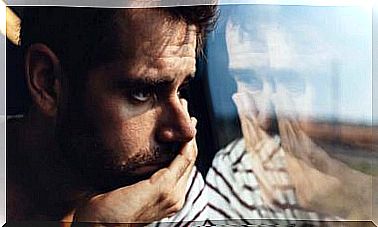How To Treat Pure Obsessions?

How to treat pure obsessions? Obsessive-compulsive disorder is a diagnostic category reserved for cases in which the patient manifests obsessions and compulsions. In some less prevalent cases, these patients may come to the consultation with symptoms based only on obsessions.
This is what is known as pure OCD or pure obsessions. Obsessions can be defined as recurrent and persistent thoughts, impulses or images, which are experienced at some point during the disorder as intrusive or unwanted, and which in most individuals cause significant anxiety or discomfort.
Compulsions often bring short-term relief. Anxiety and tension felt because of obsessions are negatively reinforced by compulsive behavior.
This compulsion makes the problem persist and eventually become chronic, as the patient learns that it is the only way he has to get rid of the anxiety and unpleasant thoughts that inhabit his mind.
In general, compulsions are not realistically related to the fear of what the person fears will happen, or are clearly excessive. For example, a patient may believe that if she knocks three times on her way out and through her house, her husband will not have a traffic accident on the way to work.
Patients who do not manifest this type of symptomatology, that is, do not resort to compulsions to relieve their discomfort, are more complex. Treating pure obsessions is more difficult, but there are currently psychological techniques to address them.

The key to treating pure obsessions is habituation.
The fact that obsessions are negatively reinforced when compulsion is practiced leads to the non-addiction, anxiety or fear they generate.
Therefore, obsessions are fed, and by feeding them progressively, they get stronger. In pure obsessive disorders, treatment is based on habituation, and for this to occur, exposure to the obsessions themselves is essential.
This exposure is often aversive to patients. Response preventive exposure can lead to significant rejection and even discontinuation of treatment. This is one of its drawbacks; however, to date, empirical evidence shows us that the treatments with the greatest therapeutic success in most patients manage to complete them.
treatment strategies
The goal, finally, is for the person to expose themselves to their thoughts or images so that they can voluntarily bring them up and “look them in the eye”. Habituation training derives from research by Salkowskis and Westbrock.
It is usually performed in an audio recording in which the patient records their pure obsessions and listens to them over and over until they get used to them. The predictability of the stimuli to which the subject is exposed is the key factor in the treatment. Through recording, the patient can predict what he will hear, unlike what happens with pure obsessions, which are unpredictable.
In addition to audio recording, other strategies can be used to present thoughts in a predictable way: deliberately evoking them, narrating them in session, or writing them down and rereading them until the anxiety subsides.
It is necessary to explain in detail to the patient how anxiety works and how habituation follows a curve in which it first increases, but at a certain point it begins to decrease. Psychoeducation facilitates treatment adherence and favors the therapeutic relationship.

the anxiety curve
The characteristic curve of anxiety is shaped like an “inverted U”. As we have already noted, when a person is exposed to their fears (whether through photos, live or, in the case of pure OCD, by recording or writing), they experience a substantial increase in anxiety.
This moment is essential because the patient thinks he is worse and is right, he feels much more anxious. But this unpleasant climb is finite. Physiologically and inevitably, increased anxiety has a limit.
When this discomfort peaks and the patient does not perform any ritual, safety behavior, or any other avoidance of any kind, the anxiety will progressively diminish. Why does it happen? First, on an emotional level, neither anxiety nor any other emotion increases linearly. It is not the characteristic pattern. There is no case where the emotion increased so much that it ended up killing someone.
On the other hand, simply being aware that our cognitions are biased or unrealistic allows us to change them to much more moderate ones. In this way, anxiety begins to lose those anchors it used to grow.
Definitely, the key is to prevent the patient who will expose themselves to their obsessions or any other stimulus that causes anxiety to know that staying and persisting is the key to success. In fact, short exposures can produce an iatrogenic effect; in addition to the patient not being able to overcome his fear, it increases it.









